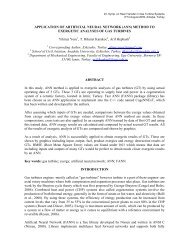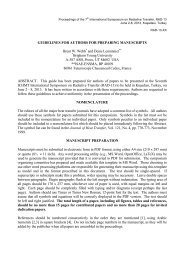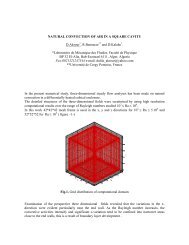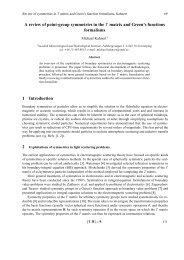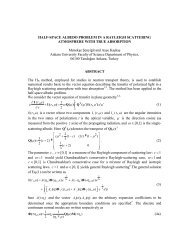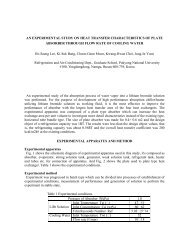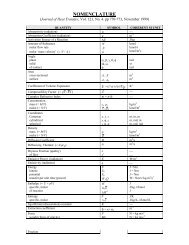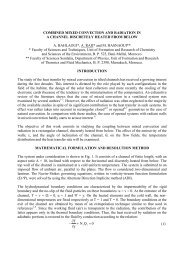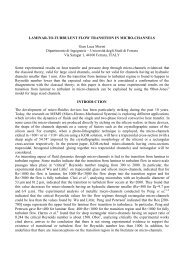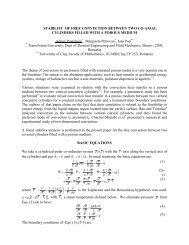Characterization of Small Ice Crystals Using Frequency Analysis of ...
Characterization of Small Ice Crystals Using Frequency Analysis of ...
Characterization of Small Ice Crystals Using Frequency Analysis of ...
Create successful ePaper yourself
Turn your PDF publications into a flip-book with our unique Google optimized e-Paper software.
226 Tenth International Conference on Light Scattering by Non-spherical Particles<br />
3 Theoretical scattering patterns<br />
Two dimensional (2D) scattering patterns have been computed using the Ray Tracing with Diffraction<br />
on Facets (RTDF) model [6,7]. The fundamental shape was a hexagonal prism with basal faces replaced<br />
by inverted (hollow) hexagonal pyramids <strong>of</strong> varying depth: 0, 10, 25 and 49% <strong>of</strong> the prism length. The<br />
aspect ratio (length to diameter) <strong>of</strong> the prisms was 3, 1 and 0.2, to represent columns, compact prisms and<br />
thin plates, respectively – giving 12 classes in total. For each shape, 2D scattering patterns for 40 different<br />
orientations were computed - Fig. 2. The central dark area in the 2D plot in Fig. 2 is due to the exclusion<br />
<strong>of</strong> the scattering on the projected outline <strong>of</strong> the particle, which in the current versions <strong>of</strong> the RTDF model<br />
is computed as Fraunh<strong>of</strong>er diffraction on a circular aperture, which would not represent 2D scattering<br />
correctly. However, this region is not seen by the outer ring <strong>of</strong> the SID-2 detector, so the present analysis<br />
is not affected. The 2D patterns were converted to the SID-2 detector outer-ring responses by integrating<br />
over corresponding angles, to give 24-element azimuthal scattering patterns. The patterns were then<br />
converted to angular frequency spectra using fast Fourier transform (FFT) and taking the magnitude <strong>of</strong><br />
the Fourier coefficients <strong>of</strong> order 1 to 12 normalized to the coefficient <strong>of</strong> order 0 – Fig. 2.<br />
Figure 2: (left) Scattering computed for a prism with 25% basal indentations: 2D pattern extending up to<br />
45°. (centre) Corresponding polar plot <strong>of</strong> square root <strong>of</strong> the outer ring response, and FFT coefficients<br />
(order 1-12) for the pattern. (right) FFT spectra for the 12 prism shapes averaged over 40 orientations -<br />
the aspect ratio decreases from left to right and the cavity depth from bottom to top.<br />
Figure 3: Fitted solution matrix for the 12 computed classes <strong>of</strong> hexagonal prisms, with 40 orientations in<br />
each class, and corrupted by random noise with signal to noise ratio <strong>of</strong> 2.4 (left) and 1.8 (right).



